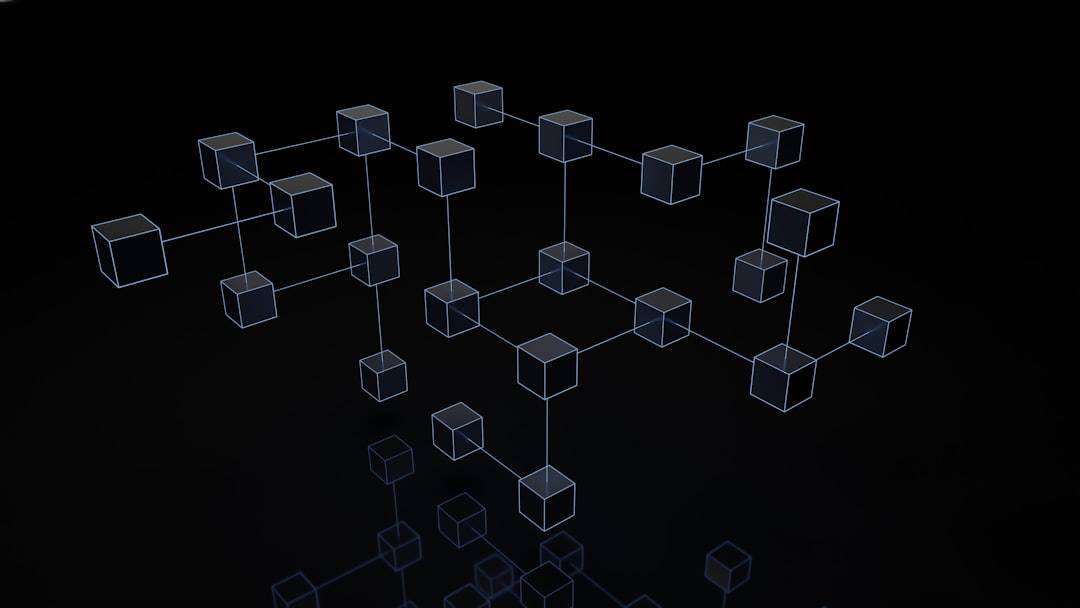In the contemporary digital era, cybersecurity threats are continuously evolving, with malicious actors employing increasingly sophisticated attack methods. Organizations face a diverse array of potential security risks, including ransomware, phishing scams, data breaches, and insider threats. It is essential for businesses to maintain a comprehensive understanding of the current threat landscape to effectively safeguard their sensitive data and systems.
Staying informed about emerging cyber threats and attack vectors enables organizations to better prepare their defenses against potential security breaches. Ransomware has emerged as a significant threat in recent years, involving malicious software that encrypts victims’ data and demands payment for its release. Phishing scams utilize fraudulent emails or websites to deceive individuals into divulging sensitive information such as login credentials or financial details.
Data breaches, whether perpetrated by external hackers or insider threats, can result in substantial financial losses and reputational damage for organizations. By recognizing these and other potential threats, businesses can implement proactive measures to mitigate risks and protect their valuable assets. In addition to external threats, organizations must address risks posed by insider threats, which may originate from current or former employees, contractors, or business partners.
These individuals may intentionally or unintentionally compromise sensitive data or systems. Consequently, it is crucial for businesses to implement robust security measures to monitor and control access to their resources. A comprehensive understanding of the various threats present in today’s digital landscape enables organizations to develop effective security strategies that address potential vulnerabilities and protect against potential attacks.
Key Takeaways
- The threat landscape is constantly evolving, with cyber attacks becoming more sophisticated and frequent.
- Implementing multi-layered security measures is crucial to protect against various types of cyber threats.
- Educating employees on cyber security best practices is essential in creating a strong line of defense against potential security breaches.
- Utilizing managed security services can provide expert support and resources to enhance an organization’s security posture.
- Conducting regular security audits and risk assessments is necessary to identify and address any vulnerabilities in the system.
- Developing an incident response plan is critical to minimize the impact of a security breach and ensure a swift recovery.
- Staying up-to-date with the latest cyber security trends and technologies is important to adapt to new threats and protect against potential vulnerabilities.
Implementing Multi-Layered Security Measures
Given the diverse nature of cyber threats, it’s essential for organizations to implement multi-layered security measures to protect their digital assets. A multi-layered approach involves deploying a combination of security technologies and practices to create overlapping layers of defense, making it more difficult for cybercriminals to breach an organization’s systems. This approach helps to mitigate the risk of a single point of failure and provides comprehensive protection against a wide range of potential threats.
One key component of a multi-layered security strategy is the use of firewalls and intrusion detection systems to monitor and control network traffic. These technologies help to prevent unauthorized access to a company’s network and can detect and respond to potential security breaches in real-time. Additionally, organizations should implement strong access controls and authentication mechanisms to ensure that only authorized individuals have access to sensitive data and systems.
This may include the use of multi-factor authentication, strong password policies, and role-based access controls. Another important aspect of multi-layered security is the use of encryption to protect data both at rest and in transit. By encrypting sensitive information, organizations can ensure that even if it is compromised, it remains unreadable and unusable to unauthorized parties.
Additionally, regular software patching and updates are essential to address known vulnerabilities and protect against potential exploits. By implementing a multi-layered security approach that incorporates these and other technologies and practices, organizations can significantly reduce their risk of falling victim to cyber attacks.
Educating Employees on Cyber Security Best Practices

Employees are often considered the weakest link in an organization’s security posture, as they can inadvertently fall victim to phishing scams, click on malicious links, or mishandle sensitive data. Therefore, it’s crucial for businesses to educate their employees on cyber security best practices to help them recognize potential threats and understand their role in maintaining a secure work environment. By providing comprehensive training and awareness programs, organizations can empower their employees to become active participants in their overall security strategy.
Training should cover a wide range of topics, including how to identify phishing emails, the importance of strong password management, the risks associated with using unsecured Wi-Fi networks, and the proper handling of sensitive information. Employees should also be educated on the potential consequences of a security breach and the role they play in protecting the organization’s data and systems. By fostering a culture of security awareness, businesses can create a workforce that is vigilant and proactive in identifying and reporting potential security threats.
In addition to training programs, organizations should also regularly communicate with employees about emerging cyber threats and provide guidance on how to respond to specific situations. This may include conducting simulated phishing exercises to test employees’ ability to recognize and report suspicious emails, as well as providing resources such as posters, newsletters, and online resources to reinforce key security principles. By investing in employee education and awareness, organizations can significantly reduce the likelihood of human error leading to a security breach.
Utilizing Managed Security Services
| Metrics | Value |
|---|---|
| Incident Response Time | 2 hours |
| Threat Detection Rate | 98% |
| Security Event Monitoring | 24/7 |
| Cost Savings | 30% |
As the complexity of cyber threats continues to increase, many organizations are turning to managed security services providers to help them bolster their security posture. Managed security services offer a range of benefits, including 24/7 monitoring and threat detection, incident response capabilities, and access to a team of security experts with specialized knowledge and experience. By partnering with a managed security services provider, businesses can offload the burden of managing their security infrastructure and gain access to advanced tools and technologies that may be cost-prohibitive to implement in-house.
Managed security services providers can offer a wide range of services, including network and endpoint security, threat intelligence, vulnerability management, and compliance monitoring. These services are often delivered through a combination of on-premises hardware, cloud-based solutions, and managed security software, providing organizations with a comprehensive security solution tailored to their specific needs. Additionally, managed security services providers can offer proactive threat hunting and incident response capabilities to help organizations quickly identify and mitigate potential security incidents.
By leveraging managed security services, organizations can benefit from the expertise of dedicated security professionals who are well-versed in the latest cyber threats and attack techniques. This can help businesses stay ahead of potential security risks and ensure that they are implementing best practices for protecting their sensitive data and systems. Furthermore, by outsourcing their security needs to a trusted provider, organizations can free up internal resources to focus on core business activities while gaining peace of mind knowing that their security infrastructure is being actively monitored and managed.
Conducting Regular Security Audits and Risk Assessments
In order to maintain an effective security posture, organizations must regularly conduct comprehensive security audits and risk assessments to identify potential vulnerabilities and gaps in their defenses. Security audits involve a systematic review of an organization’s security policies, procedures, and controls to ensure they are aligned with industry best practices and regulatory requirements. Risk assessments, on the other hand, involve identifying and evaluating potential threats and vulnerabilities that could impact an organization’s assets, as well as the likelihood and potential impact of these risks.
During a security audit, organizations should assess their overall security posture, including their network infrastructure, access controls, data protection mechanisms, incident response procedures, and employee training programs. This can help identify areas where improvements are needed and ensure that the organization is effectively mitigating potential security risks. Similarly, risk assessments can help organizations prioritize their security investments by focusing on areas with the highest potential impact or likelihood of occurrence.
By conducting regular security audits and risk assessments, organizations can gain valuable insights into their current security posture and identify opportunities for improvement. This can help them make informed decisions about where to allocate resources and prioritize security initiatives based on their specific risk profile. Additionally, regular audits and assessments can help organizations demonstrate compliance with industry regulations and standards, as well as provide assurance to stakeholders that their data and systems are being effectively protected.
Developing an Incident Response Plan

Despite best efforts to prevent security incidents, organizations must be prepared to respond effectively in the event of a breach or cyber attack. Developing an incident response plan is essential for minimizing the impact of a security incident and ensuring that the organization can quickly recover from any disruptions. An incident response plan outlines the steps that should be taken in the event of a security breach, including how to detect and contain the incident, communicate with stakeholders, mitigate the impact, and restore normal operations.
An effective incident response plan should be well-documented, regularly tested, and involve key stakeholders from across the organization. It should outline specific roles and responsibilities for responding to a security incident, as well as provide clear guidance on how to escalate issues and coordinate with external parties such as law enforcement or regulatory authorities if necessary. Additionally, the plan should include procedures for preserving evidence, conducting forensic analysis, and documenting lessons learned for future improvements.
By developing an incident response plan, organizations can ensure that they are prepared to respond effectively in the event of a security incident, minimizing potential damage and reducing downtime. Regular testing and simulation exercises can help validate the effectiveness of the plan and identify areas for improvement before an actual incident occurs. Furthermore, having a well-defined incident response plan can provide peace of mind to stakeholders and demonstrate that the organization is taking proactive steps to protect its data and systems.
Staying Up-to-Date with the Latest Cyber Security Trends and Technologies
The field of cyber security is constantly evolving as new threats emerge and technologies advance. Therefore, it’s essential for organizations to stay up-to-date with the latest cyber security trends and technologies in order to effectively protect their digital assets. This may involve staying informed about emerging threats such as zero-day exploits or advanced persistent threats (APTs), as well as understanding how new technologies such as artificial intelligence (AI) or blockchain can be leveraged to enhance security capabilities.
By staying informed about the latest cyber security trends, organizations can proactively adapt their security strategies to address new threats before they become widespread. This may involve participating in industry conferences and events, engaging with peer networks, or subscribing to reputable cyber security publications to stay informed about emerging trends and best practices. Additionally, organizations should regularly evaluate new security technologies that may help them improve their overall security posture.
In addition to understanding emerging threats and technologies, organizations should also stay informed about changes in regulatory requirements and compliance standards that may impact their security practices. This may involve staying abreast of updates from regulatory bodies such as GDPR or HIPAA, as well as understanding how new laws or regulations may impact their industry or geographic region. By staying up-to-date with the latest cyber security trends and technologies, organizations can ensure that they are implementing best practices for protecting their sensitive data and systems in an ever-changing threat landscape.
In conclusion, understanding the threat landscape is crucial for businesses looking to protect themselves from cyber attacks. Implementing multi-layered security measures is essential for creating overlapping layers of defense against potential threats. Educating employees on cyber security best practices is important for creating a workforce that is vigilant against potential threats.
Utilizing managed security services allows businesses access to advanced tools that may be cost-prohibitive otherwise. Conducting regular security audits helps identify potential vulnerabilities while developing an incident response plan ensures businesses are prepared for any breaches or attacks. Staying up-to-date with the latest cyber security trends is crucial for adapting strategies against new threats while also understanding how new technologies can enhance overall security capabilities.
If you’re interested in learning more about the historical evolution of the metaverse and its impact on cyber security, check out this article on the topic. It provides valuable insights into how virtual worlds have developed over time and the potential security challenges that come with them.
FAQs
What is MSP cyber security?
MSP cyber security refers to the measures and practices put in place by managed service providers (MSPs) to protect their clients’ IT systems and data from cyber threats and attacks.
Why is MSP cyber security important?
MSP cyber security is important because it helps to safeguard the sensitive information and critical systems of businesses and organizations that rely on MSPs for their IT infrastructure and support.
What are some common MSP cyber security threats?
Common MSP cyber security threats include malware, ransomware, phishing attacks, DDoS attacks, insider threats, and vulnerabilities in software and hardware.
What are some best practices for MSP cyber security?
Best practices for MSP cyber security include regular security assessments, implementing strong access controls, using encryption for sensitive data, keeping software and systems updated, and providing employee training on security awareness.
How can MSPs ensure strong cyber security for their clients?
MSPs can ensure strong cyber security for their clients by offering comprehensive security solutions, staying informed about the latest threats and trends, and maintaining a proactive and responsive approach to security management.
What are the potential consequences of a cyber security breach for MSPs and their clients?
Potential consequences of a cyber security breach for MSPs and their clients include financial losses, damage to reputation, legal and regulatory penalties, and disruption to business operations.











Leave a Reply